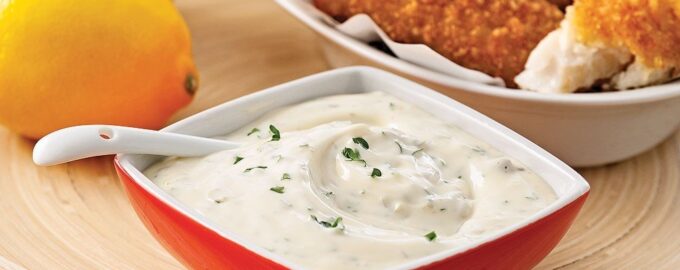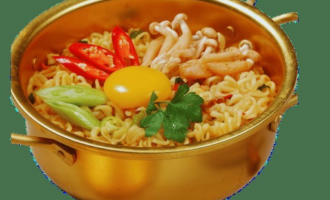MASTERING THE ART OF PEANUT SAUCE: A STEP-BY-STEP GUIDE
Peanut sauce is a versatile and delicious condiment that can elevate a variety of dishes, from salads to grilled meats. This rich and creamy sauce is a staple in many Asian cuisines, particularly Thai and Indonesian. In this guide, we will explore the ingredients, preparation methods, and some unique ways to use peanut sauce.
INGREDIENTS FOR PEANUT SAUCE
To make a basic peanut sauce, you will need the following ingredients:
– 1 cup creamy peanut butter ⸺ Choose a natural peanut butter for the best flavor.
– 1/4 cup soy sauce ⎯ This adds saltiness and umami.
– 1/4 cup warm water ⎯ To achieve the desired consistency.
– 2 tablespoons lime juice ⸺ Fresh lime juice adds brightness.
– 2 tablespoons honey or brown sugar ⸺ For sweetness.
– 1 tablespoon rice vinegar ⎯ This adds acidity.
– 1 teaspoon minced garlic ⸺ For flavor.
– 1 teaspoon minced ginger ⎯ Adds a nice spice.
– Optional: chili paste or crushed red pepper ⸺ For a spicy kick.
STEP-BY-STEP PREPARATION
STEP 1: GATHER YOUR INGREDIENTS
Ensure you have all the ingredients ready before you start. This will make the process smoother and more enjoyable.
STEP 2: COMBINE THE BASE INGREDIENTS
In a medium mixing bowl, combine the peanut butter, soy sauce, lime juice, and honey (or brown sugar). Use a whisk to mix these ingredients until they are well combined.
STEP 3: ADD WATER AND ADJUST CONSISTENCY
Gradually add warm water to the mixture while whisking. This will help to achieve a smooth and pourable consistency. You can adjust the amount of water depending on how thick or thin you want your sauce to be.
STEP 4: INCORPORATE FLAVORINGS
Add the minced garlic, ginger, and rice vinegar to the sauce. Whisk until everything is well incorporated. Taste the sauce at this point and adjust the flavor by adding more lime juice, honey, or soy sauce as needed.
STEP 5: SPICE IT UP (OPTIONAL)
If you like your peanut sauce spicy, now is the time to add chili paste or crushed red pepper. Start with a small amount and increase it to your desired spice level.
STEP 6: SERVE OR STORE
Your peanut sauce is now ready to be served! You can use it immediately or store it in an airtight container in the refrigerator for up to one week.
WAYS TO USE PEANUT SAUCE
Peanut sauce is incredibly versatile. Here are some ideas on how to use it:
– Dipping Sauce: Serve it as a dip for fresh spring rolls, chicken skewers, or veggies.
– Salad Dressing: Drizzle it over a salad for added flavor.
– Noodle Dish: Toss it with cooked noodles, vegetables, and your choice of protein for a quick meal.
– Marinade: Use it to marinate chicken or tofu before grilling.
– Sandwich Spread: Spread it on sandwiches or wraps for a creamy texture.
TIPS FOR PERFECTING YOUR PEANUT SAUCE
– Quality Ingredients: Use high-quality peanut butter and fresh ingredients for the best flavor.
– Experiment: Don’t be afraid to adjust the recipe to suit your taste. Add more lime for tang or more honey for sweetness.
– Texture: If your sauce is too thick, add more water; if it’s too thin, add more peanut butter.
– Storage: Always store your peanut sauce in the fridge and give it a good stir before using, as it may separate.
CONCLUSION
Mastering peanut sauce is a rewarding culinary skill that can enhance your cooking repertoire. With this step-by-step guide, you can create your own delicious peanut sauce at home. Enjoy experimenting with different dishes, and savor the rich, nutty flavors that this sauce brings to your meals!
PEANUT SAUCE VARIATIONS
Once you’ve mastered the basic peanut sauce recipe, consider experimenting with different variations to suit your taste preferences or to complement specific dishes:
– Coconut Peanut Sauce: Add 1/4 cup of coconut milk to your peanut sauce for a creamy, tropical twist. This variation works beautifully with grilled shrimp or chicken.
– Spicy Sriracha Peanut Sauce: Incorporate Sriracha or your favorite hot sauce for an extra kick. This sauce pairs well with Asian-inspired bowls and tacos.
– Herbed Peanut Sauce: Mix in fresh herbs like cilantro or basil for a fresh flavor boost. This is excellent for drizzling over salads or grilled vegetables.
– Sesame Peanut Sauce: Add a tablespoon of sesame oil and a sprinkle of sesame seeds for a nutty depth that enhances the sauce’s flavor profile.
PEANUT SAUCE IN DIFFERENT CUISINES
Peanut sauce is not just confined to Asian cuisine; it has found its way into various culinary traditions around the world:
– Thai Cuisine: In Thailand, peanut sauce is often served with satay, a popular street food comprising skewered and grilled meat.
– Indonesian Cuisine: Known as “sambal kacang,” peanut sauce is a key ingredient in many Indonesian dishes, including gado-gado, a vegetable salad topped with peanut dressing.
– African Cuisine: In West Africa, groundnuts (peanuts) are used in stews and sauces, highlighting the versatility of peanuts in savory dishes.
HEALTH BENEFITS OF PEANUT SAUCE
Aside from its delicious flavor, peanut sauce offers several health benefits:
– Protein-Rich: Peanuts are a great source of plant-based protein, making peanut sauce a hearty addition to vegetarian meals.
– Healthy Fats: The monounsaturated fats found in peanuts are heart-healthy and can help lower bad cholesterol levels.
– Vitamins and Minerals: Peanuts contain essential nutrients such as vitamin E, magnesium, and niacin, contributing to overall health.
FINAL THOUGHTS
Peanut sauce is a culinary delight that offers endless possibilities. With just a few simple ingredients and a bit of creativity, you can create a sauce that not only enhances your meals but also satisfies your taste buds. Whether you’re using it as a dip, dressing, or marinade, mastering peanut sauce will undoubtedly become a cherished skill in your kitchen.
Don’t hesitate to share your own variations and experiences with peanut sauce. Cooking is all about exploration, so let your taste guide you as you create your unique versions of this beloved sauce!






